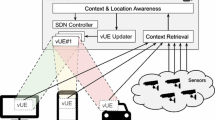Abstract
There is budding interest among telecommunications network and service providers in allowing subscribers to activate their telecommunications services by directly interacting with a fully automated service activation process. This capability facilitates both service turn-up for new customers and service addition for existing customers. Direct, automated service activation (DASA) is enabled by remote management of service attributes, which is governed by input from a variety of possible customer access channels. Some of the most promising direct input channels, beyond DTMF (dual-tone multi-frequency) keypad signaling, include centrally located video kiosks, portable analog display sets, and in-home video monitors. Another significant enabler for direct, automated activation is re-engineering key aspects of the existing service activation architecture. Three possible functional architectures for a DASA application, each progressively more complex, are out-lined. For any of these architectures, re-engineering must focus on several important aspects, such as the flexible sequencing of processing steps and closer alignment between network and administrative data.
Similar content being viewed by others
References
W. J. Hines and E. L. Pinnes, Trends in the automation of service provisioning,IEEE Journal on Selected Areas in Communications, Vol. 6, No. 4, pp. 656–661, May 1988.
R. F. Rey (technical ed.), Network switching systems. InEngineering and Operations in the Bell System, 2nd edition, AT&T Bell Laboratories, Murray Hill, NJ, pp. 406, 438, 1986.
E. F. O'Neill (ed.), Services, InA History of Engineering and Science in the Bell System, Transmission Technology (1925–1975), AT&T Bell Laboratories, Murray Hill, NJ, pp. 722–723, 1983.
R. McKenna, Marketing is everything,Harvard Business Review, Vol. 69, No. 1, pp. 65–79, January–February 1991.
G. Gilder, Into the telecosm,Harvard Business Review, Vol. 69, No. 2, pp. 150–161, March–April 1991.
M. J. Ahrens, “Soft dial tone” service activation: A step toward re-systemization, IEEE 1992 Network Operations and Management Symposium, Symposium Record, Vol. 2 of 3, pp. 336–345, 1992.
M. Hammer, Reengineering work: Don't automate, obliterate,Harvard Business Review, Vol. 68, No. 4, pp. 104–112, July–August 1990.
J. A. Byrne, Management's new gurus,Business Week, pp. 44–52, August 31, 1992.
Author information
Authors and Affiliations
Rights and permissions
About this article
Cite this article
Ahrens, M. Potential future applications of direct, automated service activation. J Netw Syst Manage 1, 57–70 (1993). https://doi.org/10.1007/BF01026828
Issue Date:
DOI: https://doi.org/10.1007/BF01026828




